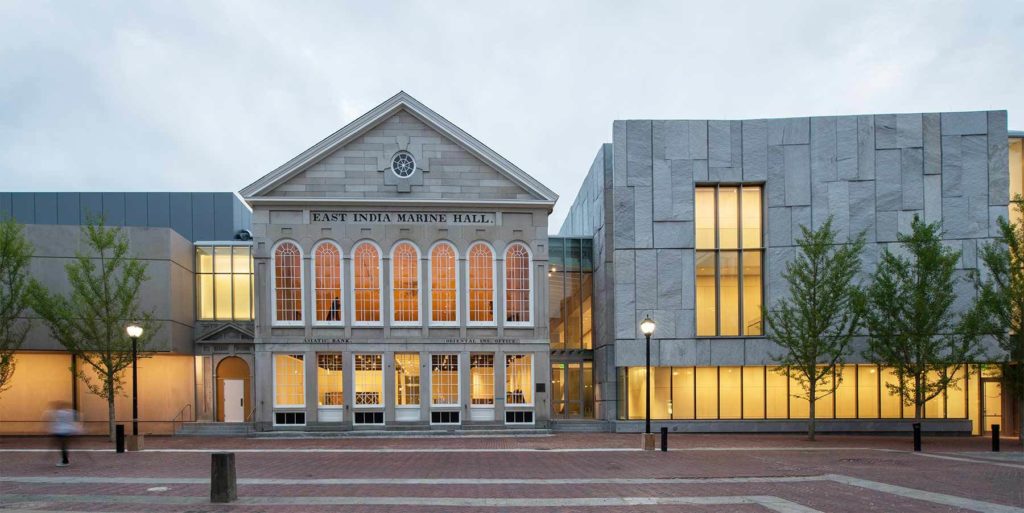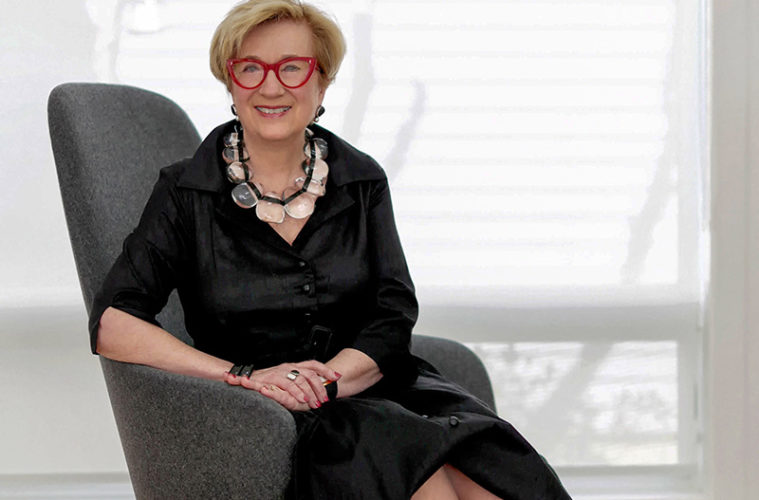Lynda Roscoe Hartigan has moved several times during her museum career, taking along seashells collected from beaches all over the world. Bags are marked with the date and location of their discovery. “I love the ocean and the act of beachcombing. There is something mesmerizing about the activity of walking along the water’s edge and looking down,” says Hartigan, who returned in August to the Peabody Essex Museum as its new executive director and CEO. “I think there is this compulsion to acquire some part of nature and keep it with you.” Back on the North Shore, Hartigan’s next collecting goal is sea glass.
PEM’s early collecting, which began more than 200 years ago, included natural curiosities from both Essex County and around the world. It’s fitting that the museum’s summer exhibition, “In American Waters,” with its classic maritime paintings, many from PEM’s collection, welcomed Hartigan back to the Massachusetts coastline, to where she served as PEM’s first chief curator, rising to deputy director in 2016. In her years at PEM, she led an ambitious, award-winning curatorial and exhibition program and reimagined the museum’s collection strategies.

But, like the rest of the world, home has changed. With the pandemic, racial protests, exposed food insecurity and a housing crisis, PEM has to stay vigilant to serve the community, says Hartigan, who returns from a year serving as deputy director for Collections & Research and chief innovation officer at Canada’s largest and most visited museum, the Royal Ontario Museum (ROM) in Toronto. Though Hartigan worked at ROM mostly virtually, she has learned a lot and plans to bring her progressive vision to advance PEM as a vital and positive force in people’s lives.
ROM is an art museum that also focuses on the sciences. “It reminded me that you can cross-fertilize the disciplines and come up with something fresh,” says Hartigan. “PEM is a combination of art, culture, and nature, going back to our origins.” In times of great confusion, we must be creative, says Hartigan, naming PEM’s Climate and Environment initiative as an innovative program to come out of the pandemic. More than ever, she says, we need to work together to heal, and a powerful way to do that is through creative expression. It’s good timing given the cultural reckoning for museums spreading across the globe. “We’ve never been one to say it’s popular, so obviously let’s do it,” says Hartigan. “But given the cultural change going on, what we do has to be listening and figuring out how to be responsive to that. For exhibitions and programs, we need to create a place to come together and discuss and move toward some sort of greater understanding.”
A leader, a partner, and an advocate
As the first woman to steer the 220-year-old institution, Hartigan says she’s looking to build trust with the staff, while leading with an open and collaborative spirit. She wants to offer clarity, consistency and fairness. “I want to operate as a leader, as a partner and as an advocate in a balanced way,” she says. “Empathy is a word that gets thrown around a lot. I believe it is at the core of my fiber as a human being.”
Hartigan specializes in American art, especially modern, folk, and Black artists, yielding numerous widely recognized exhibitions and publications. What it means to be American grounded her early career at the Smithsonian. In early 2022, PEM will open its new American wing, a project Hartigan helped launch before her departure. The reinstallation of PEM’s Putnam Gallery will make connections between its expansive collection of American decorative arts and paintings with one of the oldest ongoing collections of Native American art in the Western hemisphere. “The key themes that are driving it are identity and placemaking,” says Hartigan. “Making a place for many different perspectives. There will be lots of food for thought in that installation. That these objects can help us understand our complex times is really important.”
Another exhibition offering a multitude of perspectives is The Salem Witch Trials: Reckoning and Reclaiming, which opened in September and runs through March 2022. With portraits by artist Frances Denny that focus on modern day witches from around the country, the exhibition looks to separate those who identify as witches today from the perception of a witch in 17th century Salem when the word was used to control and silence women.
So, just how can the nation’s oldest continually operating museum help us understand our present moment? “To me, it’s about making it available for lifelong learning,” says Hartigan. “Drawing on the past, but valuing the present. Demonstrating that we’re flexible, we’re responsive, we’re open. There is a sense of tradition and permanence because you have a collection, because you have this legacy for developing experiences. But it’s about being able to consistently demonstrate that you are a living organism. That living organism has a responsibility to be responsive and to be participatory. It’s always being open to looking for potential. The potential to make meaning and to pave the way for understanding.”
To learn more and plan your visit, go to pem.org. For a Q&A with Lynda Roscoe Hartigan, go to PEM’s blog, “Connected.”

